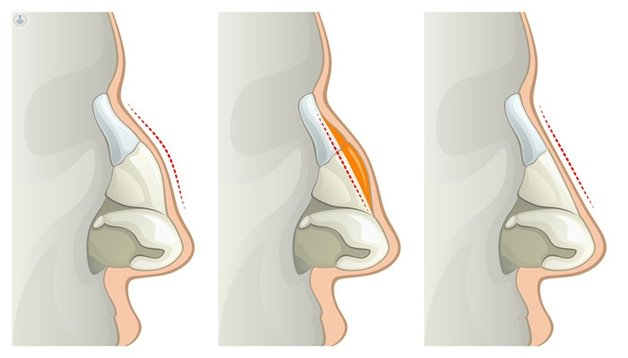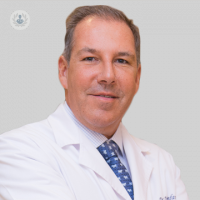Advantages and Disadvantages of Different Rhinoplasty Techniques
Written by:Rhinoplasty or rhinoseptoplasty is the aesthetic and functional intervention that is responsible for the correction of the deformities of the nose, treating the nasal osteocartilaginous structures to correct both the external shape of the nose and the deviation of the nasal septum. In this way you get a better look, better shape and size harmonious nose, proportional to the face and maintaining nasal respiratory function.
Nasal interventions are one of the most frequent in Plastic Surgery and Aesthetic Facial and can be primary (for the first time in a person) or secondary (surgeries to improve the results of a primary rhinoplasty).
Rhinoplasty Techniques
The rhinoplasty techniques used for nasal correction may be:
- Rhinoplasty Operation:
- Closed rhinoseptoplasty: the most classic and the first described; All your incisions are hidden inside the nose. Since it is more difficult to visualize the internal structures of the nose, it is a more complex technique and requires more experience on the part of the surgeon. It usually presents less postoperative edema, with a lower risk of infection and altered skin circulation.
- Open rhinoplasty: this technique, in addition to the internal incisions, associates an external incision in the lower part of the columella (medial part that separates the two nostrils). This allows the skin to be detached and lifted from the tip, better visualizing the internal structures and allowing a direct remodeling. It requires less experience on the part of the surgeon, although it is more invasive and leaves a scar that in the majority of the cases is little visible.

- Open-closed rhinoplasty (delivery technique): it is a technique that combines the advantages of the management of nasal structures with direct vision (open technique), but without making the incision in the Columela and, therefore, without leaving visible scars (Closed technique). It is the least known technique but with the greatest advantages of all techniques .
- Non-surgical Rhinoplasty:
- Rinomodelación: is a relatively new technique, without surgery, that consists of using a substance (resorbable or definitive) biocompatible with the body to fill certain strategic points of the nose, achieving changes as: elongation, profiling, tip lifting and correction of Gibes, with very acceptable aesthetic results from the moment of application. It is a technique without practically postoperative and with an instant incorporation to the habitual activities. It is very useful and is increasingly used to improve outcomes of secondary surgeries and also in some primary surgeries with very satisfactory results. It is very important the previous assessment of the indication of this procedure in each patient, to see how the nose will stay and the points that need correcting.
Advantages of the Rhinomodeling:
No surgery required, no surgical trauma.
Lower cost than a rhinoplasty.
Fast technique, your change is achieved in less than 20 min.
With this technique, you can forget the annoying plasters, nasal plugs, bleeding and all the post-operative discomfort.
Disadvantages of Rinomodelación:
It has precise indications and does not serve for all cases.
Does not improve respiratory function.
In the case of use of resorbable filler materials, it is not definitive.

- Botox. It infiltrates to the level of certain muscles of the nose to change the aspect of the same one.
- Suspension threads. They are placed on the back to get a tip lift.
With these techniques may be obviated the annoying splints, nasal plugs, bleeding and all postoperative discomfort.
In preparing for nasal correction, as with any treatment, it is important to listen to the patient's concerns and desires as well as to know why he has made the decision to undergo nose surgery. Assess the aesthetic and / or functional motivations, making them have realistic expectations of the possibilities of each technique, who are informed of all possible consequences and possible adverse effects.
Rhinoplasty Operation
In surgical cases, a complete preoperative period must be performed with analysis, ECG, X-rays, and preanesthetic evaluation.
Like other cosmetic or restorative surgeries, it is performed in a clinic with fully equipped operating room and a room suitable for postoperative recovery.
The intervention usually lasts between 1 and 2 hours. It is usually with general anesthesia, although it can also be performed with local anesthesia and sedation.
In the recovery room, patients usually wear endonasal plugs (which are removed between the first and third postoperative day) and an external nasal splint (which is removed about one week after surgery).
There are discomforts derived from rhinoplasty (tamponade, bruising and swelling) that decrease rapidly between the first 8 - 10 days. Everyday life is usually resumed on a weekly basis, although caution should be exercised during the first month in performing activities with a risk of hitting the nose.
Although the improvement is usually seen since the plaster is removed, the definitive results can not be evaluated until 6 - 9 months.
The nose as a medial structure on the face is one of the most determinant in the facial aspect together with its important function in breathing. The fact of undergoing this intervention is always linked to aesthetic, emotional and functional factors, so the plastic surgeon must correctly interpret the aspirations of the patient and explain in detail the steps and aesthetic and functional results to be understood by himself .


